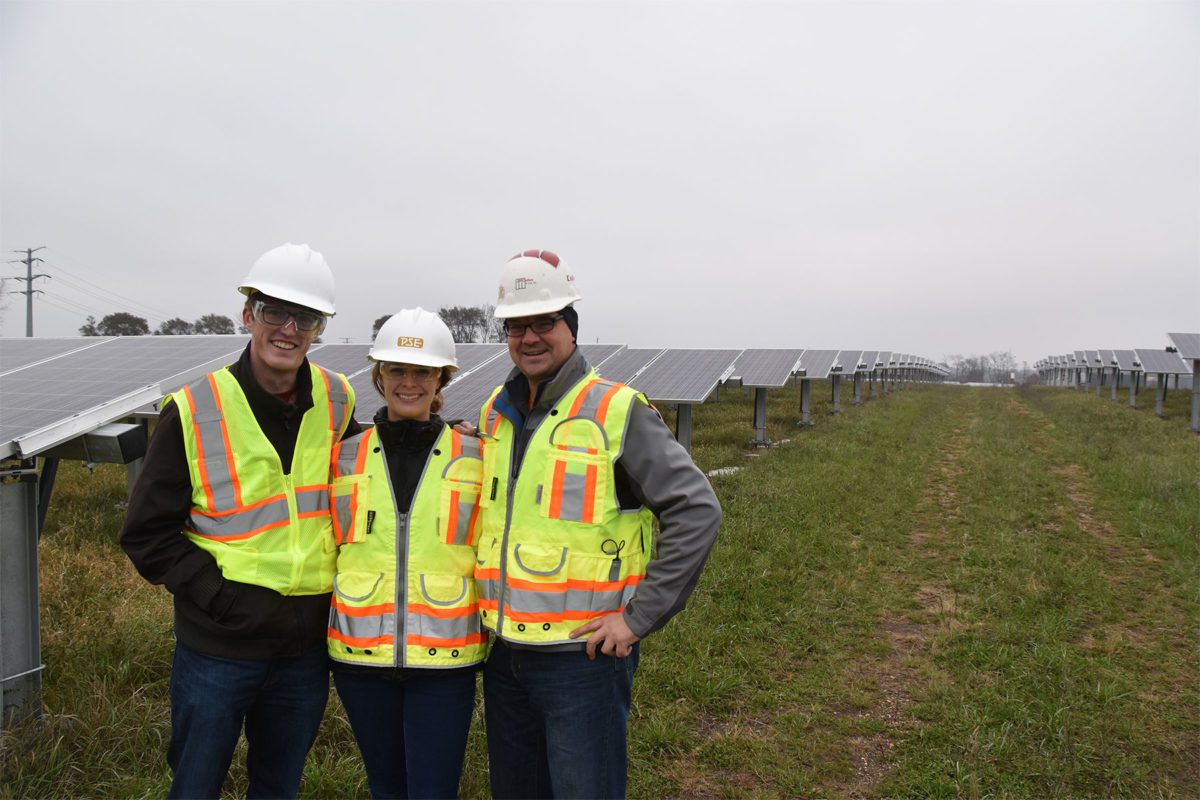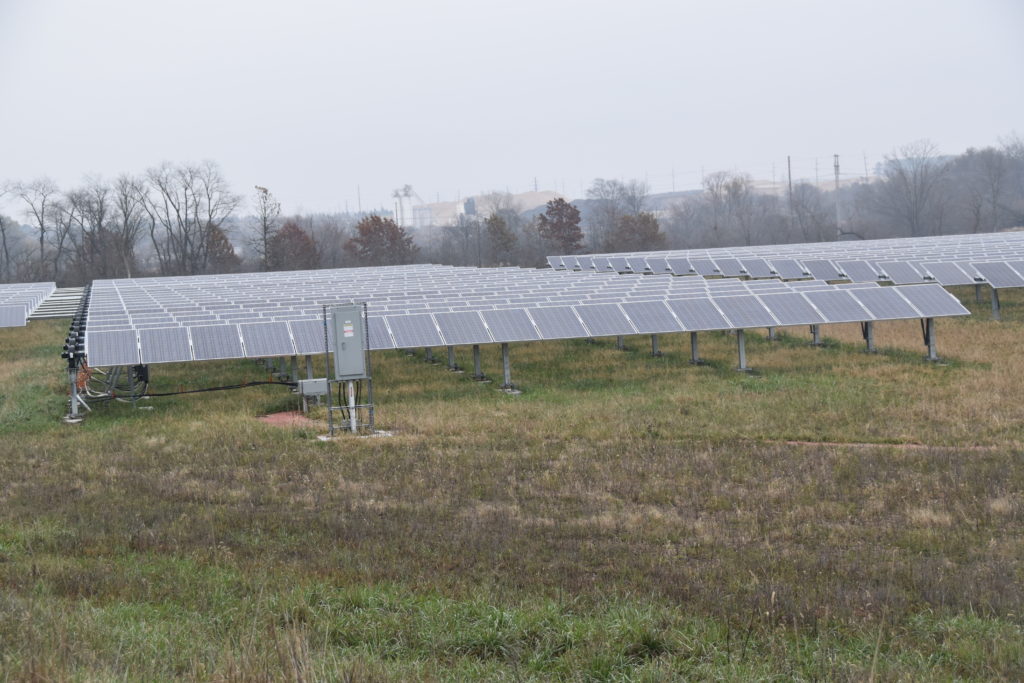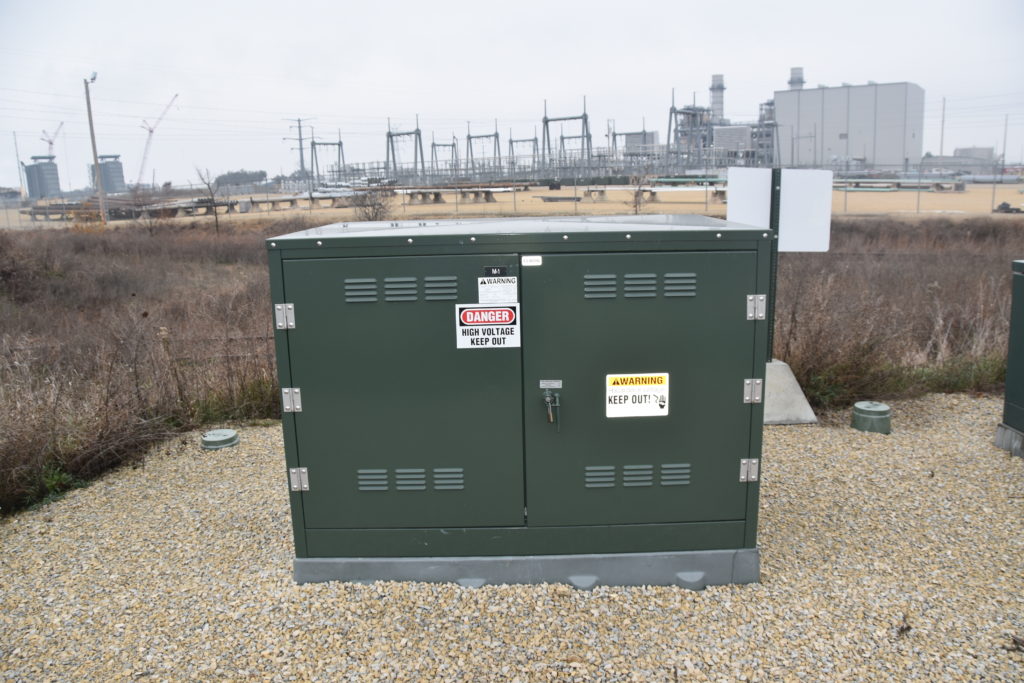
In fall 2017, a group of engineering professionals had a remarkable learning opportunity: a visit to the Alliant Energy Rock River solar facility in southern Wisconsin. They heard a presentation by the facility’s project manager and toured the installation. They had a chance to ask about the project’s permitting, planning, and risks, and they got answers directly from Rock River staff.
University of Wisconsin-Madison organized the site visit for students in its professional engineering programs. These programs offer flexible online degrees for working engineers seeking to learn new skills while maintaining their current jobs. For example, the Master of Engineering: Engineering Management (MEM) program provides an MBA-style education in the business of engineering. The Master of Engineering: Sustainable Systems Engineering (SSE) delves into the policy and science of clean energy sources. And the Master of Engineering: Engineering Data Analytics (MEDA) focuses on big data in an engineering context.
A unique feature of these programs is that students can focus on real-world projects directly related to their interests. With the Rock River visit, SSE and MEDA students enrolled in a Technical Project Management course chose to pursue a valuable learning experience at Wisconsin’s largest utility-scale solar installation.

“The site visit afforded them the opportunity to dig into the details of this project and prepare a realistic and representative analysis,” says James Tinjum, associate chair of the Department of Engineering Professional Development.
Tinjum notes that many professional engineering programs use the same professor-assigned case studies every year in their project management courses. By contrast, students at UW–Madison work closely with faculty to develop group projects that align with their career goals.
“In our programs,” Tinjum says, “group projects are chosen by the students themselves and often involve projects that the companies they work for are experiencing. Thus, these projects have direct relevance to the students.”
Innovative solutions
Kristine Engel, a student in UW–Madison’s Sustainable Systems Engineering program, was a member of the team that selected the Rock River project. As an engineer who hopes to lead renewable-energy siting and design projects, she was intrigued by the challenges involved in building the solar facility.

“This project was constructed on top of a closed coal ash landfill, so the project team had to find innovative solutions to avoid disturbing the landfill cap,” she says. “Our site visit was indispensable to our understanding of project motivations and constraints not detailed in the broad summaries we found online. Talking to the project team gave us an idea of the complexity of planning a project with many stakeholders.”
Engel feels fortunate to work with UW–Madison instructors who can connect classroom learning with these kinds of experiences in the field.
“My knowledge of the Rock River project and my Technical Project Management course have given me confidence and a frame of reference for efficient project planning,” she says. “The thought of being responsible for a project plan is much less daunting now.”
To learn more about flexible online programs from UW–Madison’s Department of Engineering Professional Development, see here.